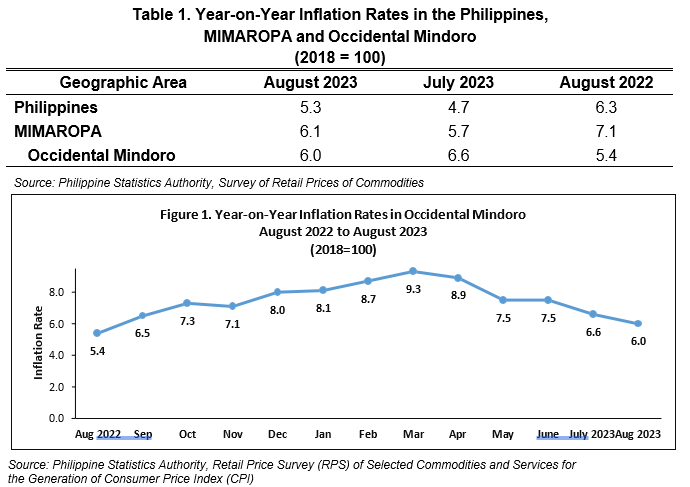
Inflation in Occidental Mindoro continued to slowed down to 6.0 percent in August 2023 from 6.6 percent in July 2023. This is higher than the inflation rate of 5.4 percent in August 2022. Meanwhile, the inflation in MIMAROPA also accelerated, from 5.7 percent in July to 6.1 percent in August 2023. In August 2022, the inflation rate in the region was 7.1 percent.
Inflation Rate by Commodity Group
In August 2023, five (5) commodity groups recorded lower inflation rates. While, Clothing, Transport, Education services, Restaurants and Accommodations, and Personal Care and Miscellaneous Goods and services showed higher inflation rates. Furnishings, Household Equipment and Routine Household Maintenance; Information and Communication and Financial Services remained unchanged in terms of inflation rate compared to August 2023.
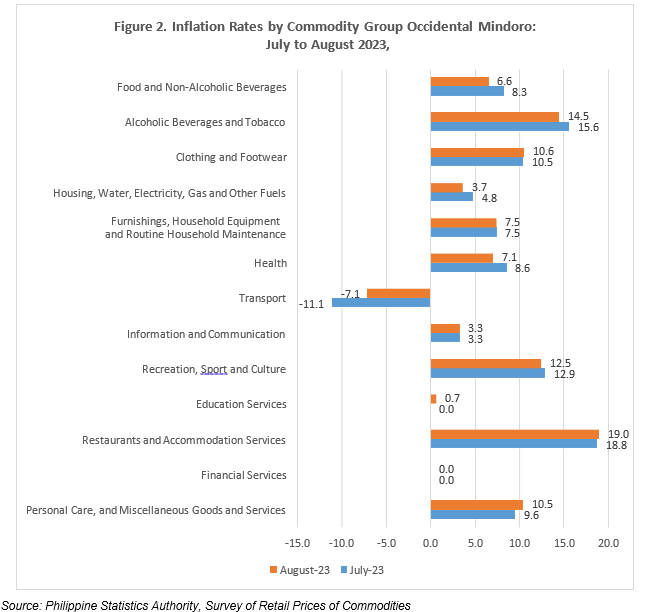
Inflation Rate by Food Group
The inflation rate for the food index in the province decelerated to 5.8 percentin August 2023 from 7.7 in July 2023. In August 2022, the inflation rate for the food index in the province was recorded at 4.8 percent
Nine commodities from the Food group had contribution to the downtrend of the food index in August 2023. This indicates slower year-on-year growth rates for the food group. Only fish and other seafood had an accelerated annual growth rate, from 3.9 percent in July 2023 to 5.5 percent in August 2023. Vegetables, tubers, plantains, cookingbananas, and pulsesretained their inflationrate of 16.4 percent in August 2023.
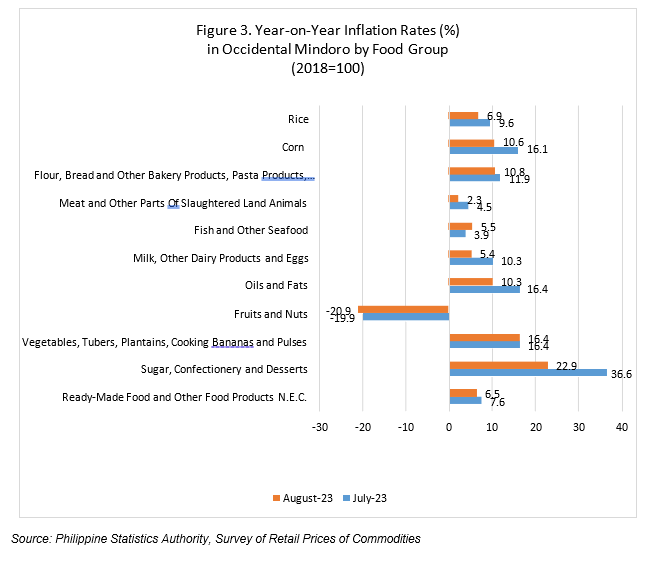
Purchasing Power of the Peso(PPP)
The Purchasing Power of the Peso in Occidental Mindoroin August 2023 remained at Php 0.77.This figure means that a peso in 2018 is only worth 77 centavos in August 2023, while the PPP was registered at 0.82 in August 2022. As a result,the amount of goodsthat can presently be purchased by consumers is lower compared to when the PPP was higher.
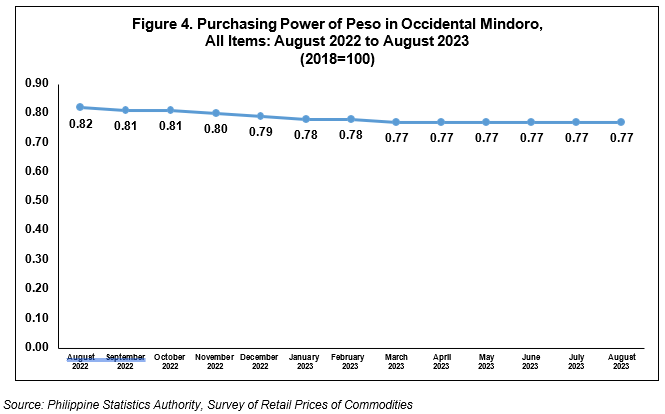

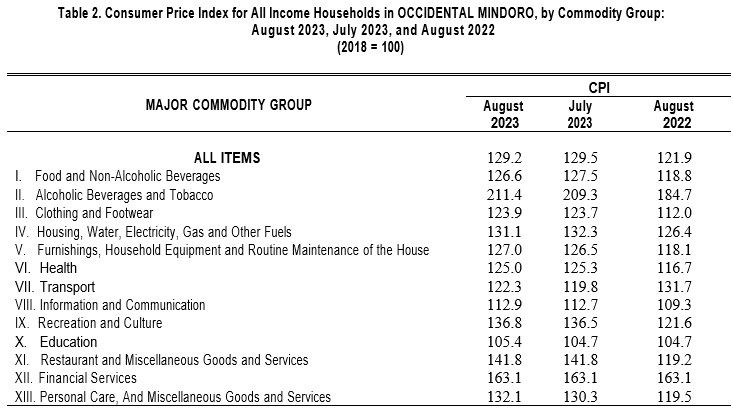
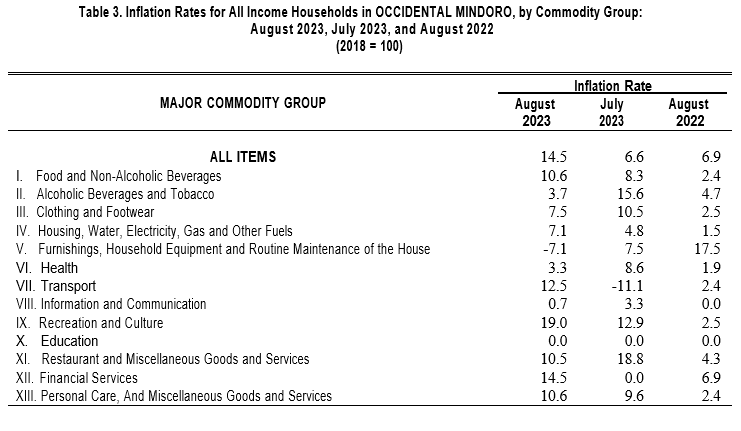
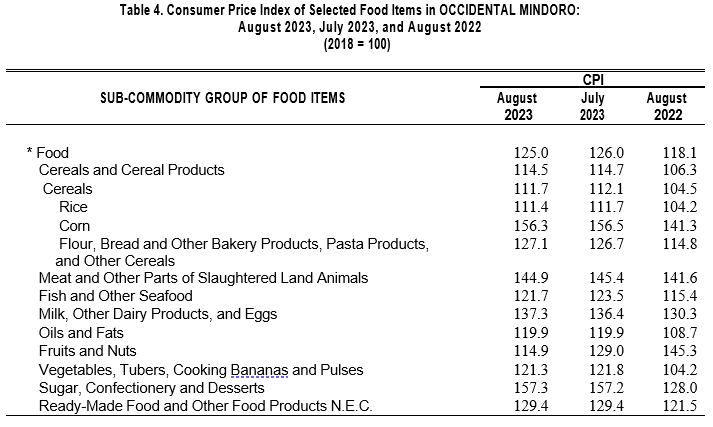

Technical Notes
What is Consumer Price Index (CPI)?
The CPI is an indicator of the change in the average retail prices of a fixed basket of goods and services commonly purchased by households relative to a base year.
What are the uses of CPI?
The CPI is most widely used in the calculation of the inflation rate and purchasing power of the peso. It is a major statistical series used for economic analysis and as a monitoring indicator of government economic policy.
How is the CPI computed?
The CPI is computed using the weighted arithmetic mean of price relatives, a variant of the Laspeyres formula with fixed base year period weights. In computing the CPI, the formula is

where:
Pn = current price
Po = base period price W = PoQo = weights
Base Period - a reference date or simply a convenient benchmark to which a continuous series of index numbers can be related. The base period is year and the index is taken as equal to 100. The present series uses 2012 as the base year.
Market Basket - selected sample of the varieties of goods purchased by consumption and services availed by households in the country to represent the composite price behavior of all goods and services purchased by consumers.
Weighting System - a desirable system that considers the relevance of the components of the index. For the CPI, the weighting pattern uses the expenditures on various consumer items purchased by households as a proportion to total expenditure.
What is Inflation Rate?
Inflation rate is the annual rate of change or the year-on-year change of the CPI expressed in percent. That is,

where:
CPI1 - is the CPI in the Previous period
CPI2 - is the CPI in the Current period
What is Purchasing Power of the Peso (PPP)?
The PPP is a measure of the real value of the peso in a give period relative to a chosen reference period. It is computed as the reciprocal of the CPI and multiplying the result by 100. That is,


